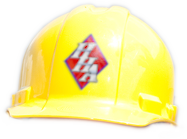Summer is just around the corner. Before it gets on your nerves, it is time to get a professional inspection and tune-up for your cooling unit. It is best to prepare your A/C as early as now to ensure a comfortable home 24/7 during these humid days.
source credit: Deposit Photos
Before getting busy with other stuff at home such as cleaning the yard and stocking up the pantry, being proactive with your air conditioning unit is a must. Definitely, you will have to add air conditioner tune-up to your summer to-do list for the system to operate at its full capacity.
Our Expert Tune-up Service Package
Neglecting or ignoring a tune-up service for your unit increases the risk of costly breakdown, higher energy bills and an uncomfortable home. But, scheduling a regular maintenance service gives you a direct return on your investment.
A professional tune-up service includes the following:
Complete inspection
Cleaning of the outdoor unit, condenser coils, ductwork and filters
Calibrating of thermostat
Checking of coolant level
Minor repair issues
You can take advantage of these preliminary benefits once you schedule your system for a tune-up.
Why Tune-Up Your A/C?
Improves the system’s performance and efficiency
The advent of the hot season will require you to run your air conditioning unit for long hours every day. Thus, you have to secure that the system operates at its peak efficiency. An advanced tune-up helps in maintaining a well-performing cooling unit plus, a cooler and more comfortable home.
Prevents unwanted service or emergency calls
What if your A/C had run out in the middle of the humid days of summer? An unexpected breakdown would mean expensive repairs. To avoid this, take advantage of the preventative maintenance package offered by your trusted HVAC provider.
Increases your A/C lifespan
Want your system to live longer? Just like how you sustain your food for long life, your A/C also needs some pampering and a daily dose of care and maintenance. With a polished tune-up service, you can extend the lifespan of your cooling system for years.
Keeps your family healthy
When you engage your system to a maintenance program, the package includes cleaning some of the vital parts of the system. With this, you can prevent dirt and dust from building up that may soon cause havoc to your family’s health.
So waste no time and schedule a tune-up service with our experts!
source credit: https://bit.ly/3f626tO








